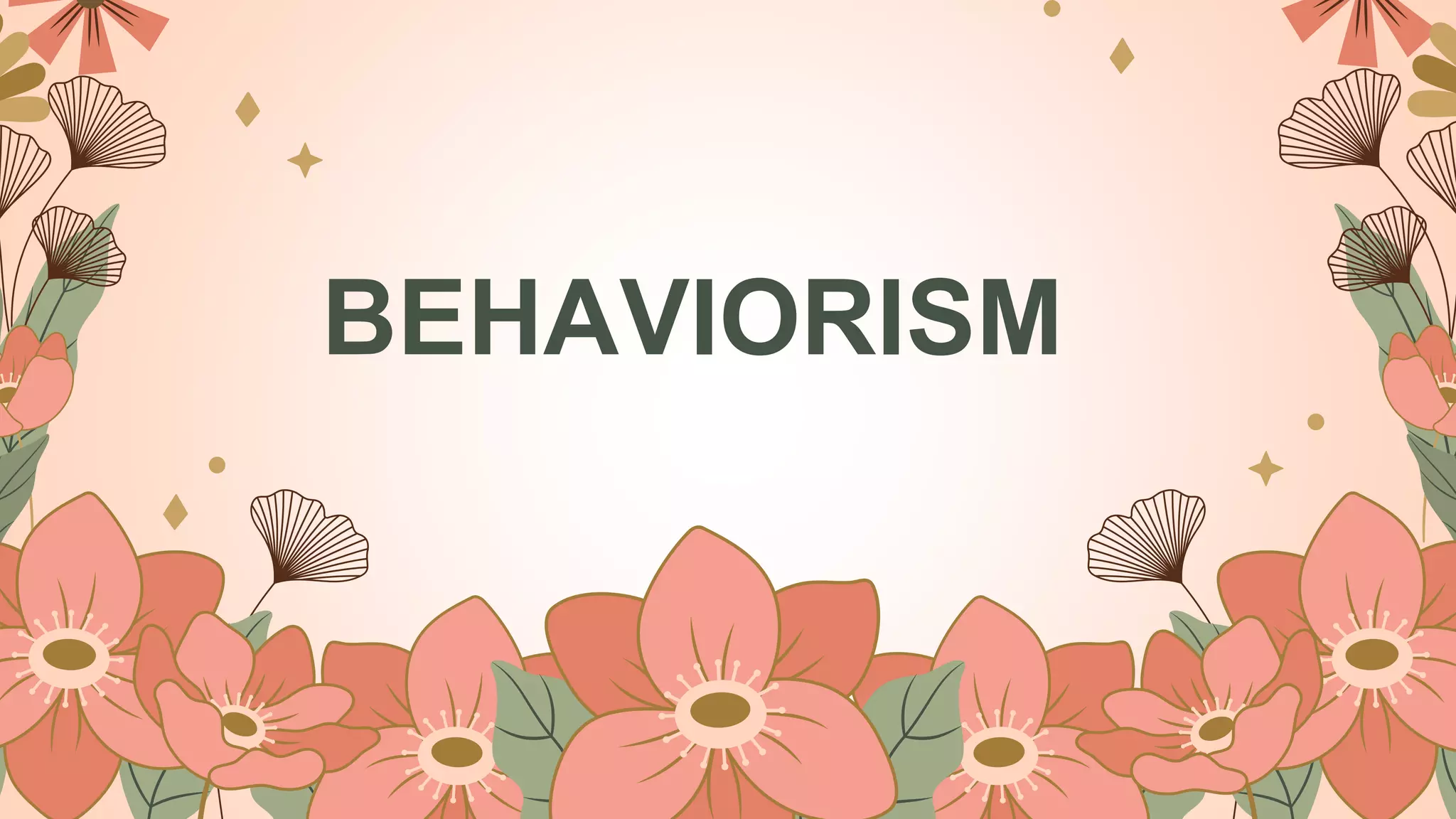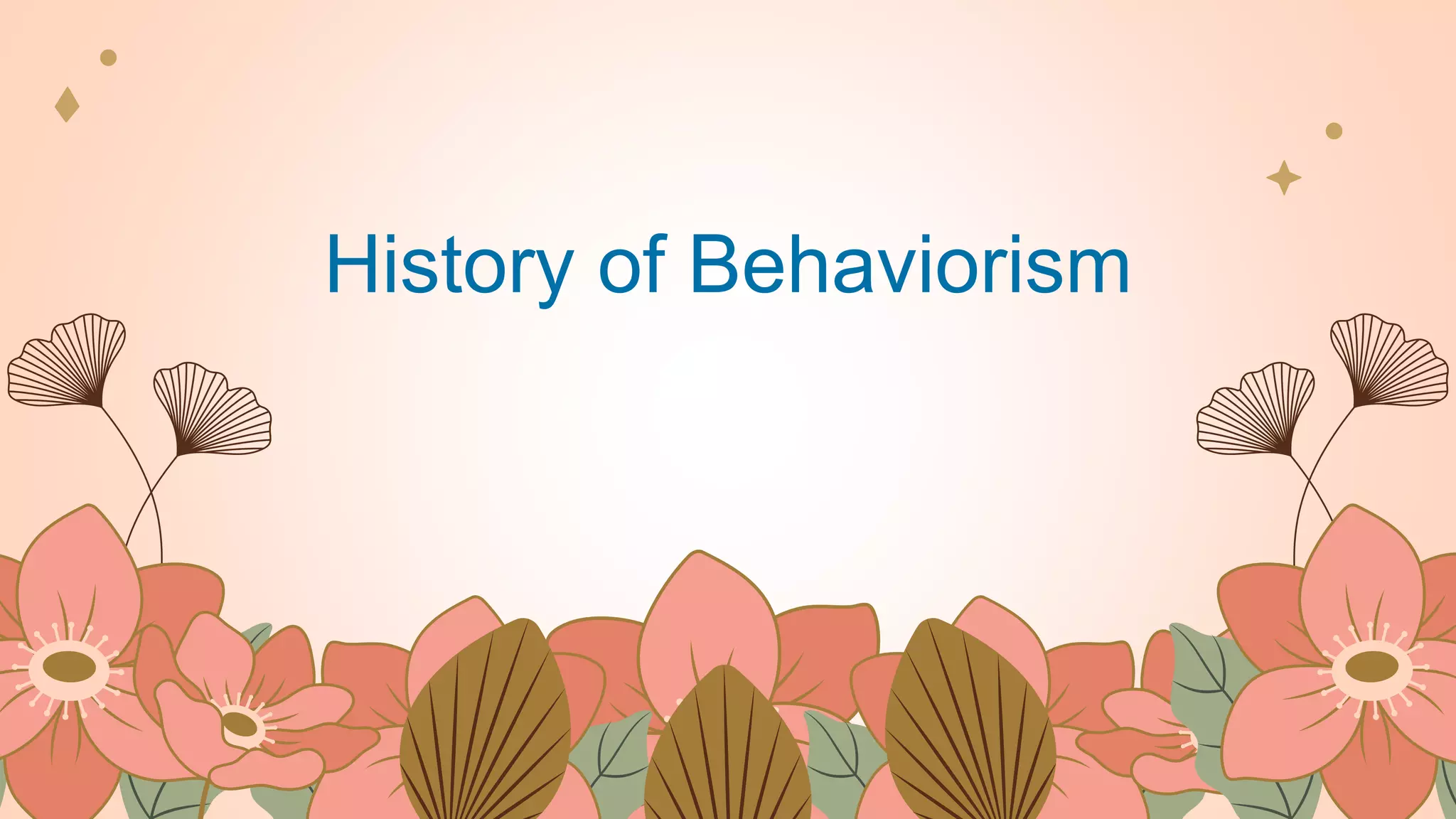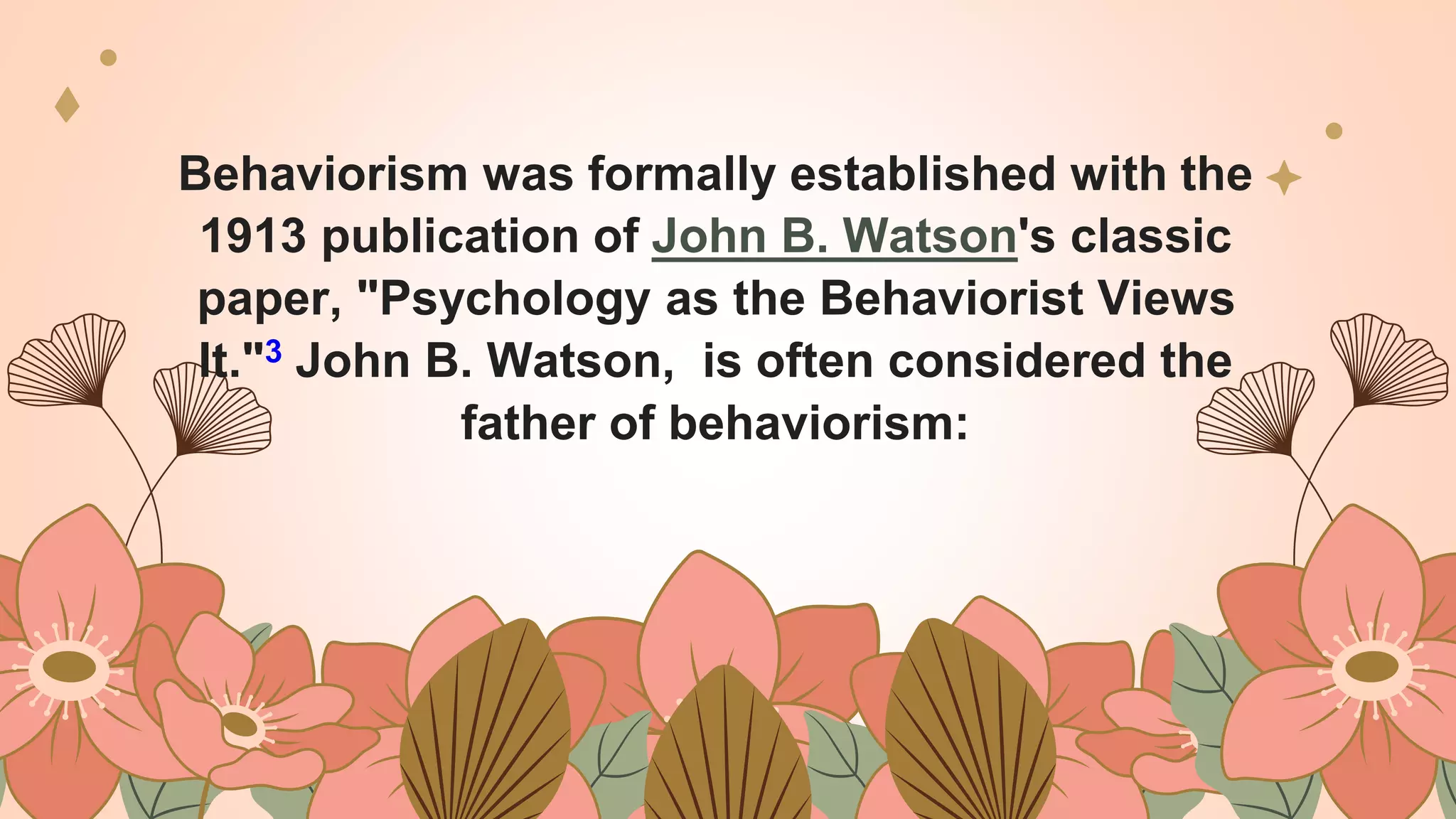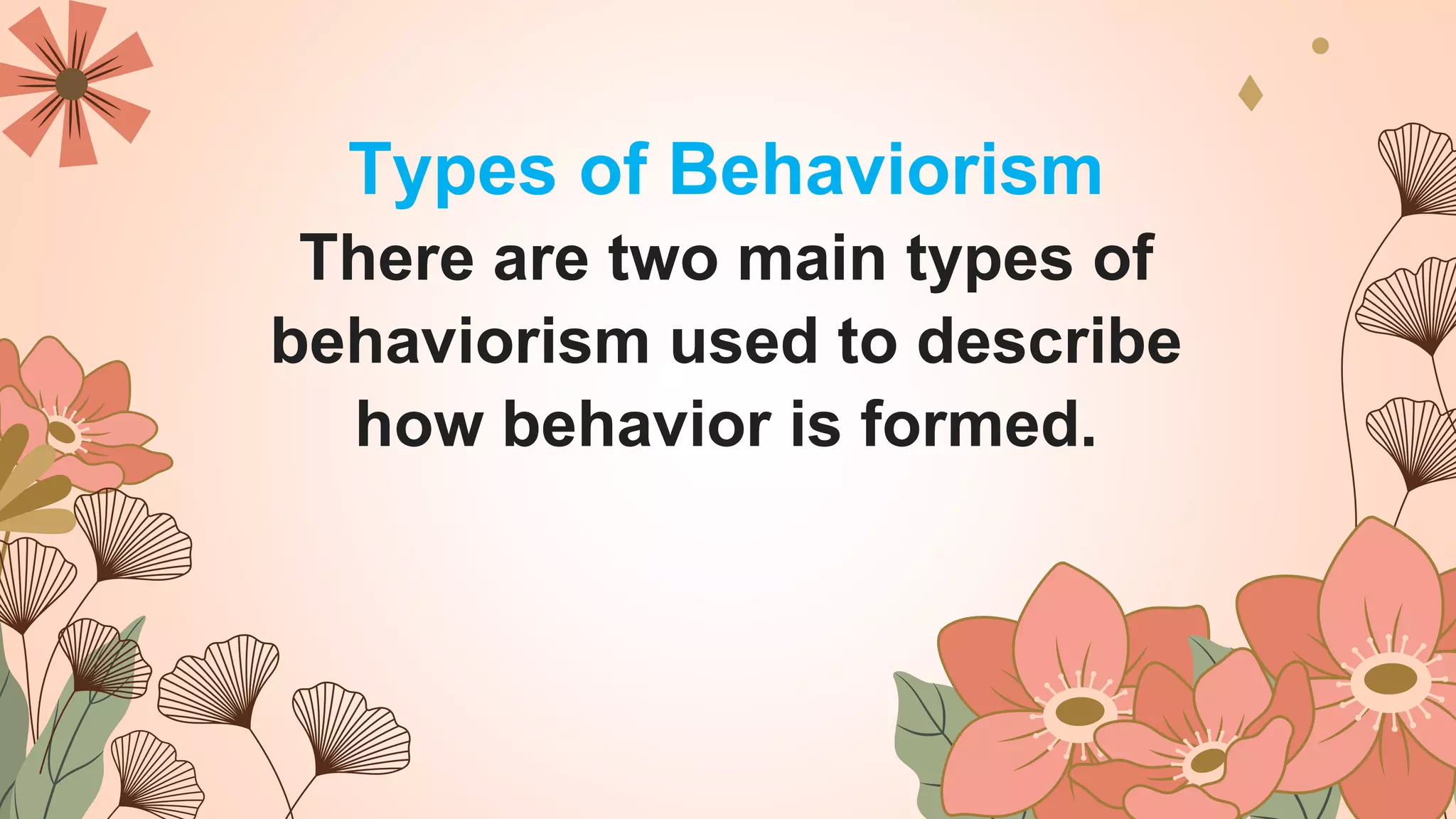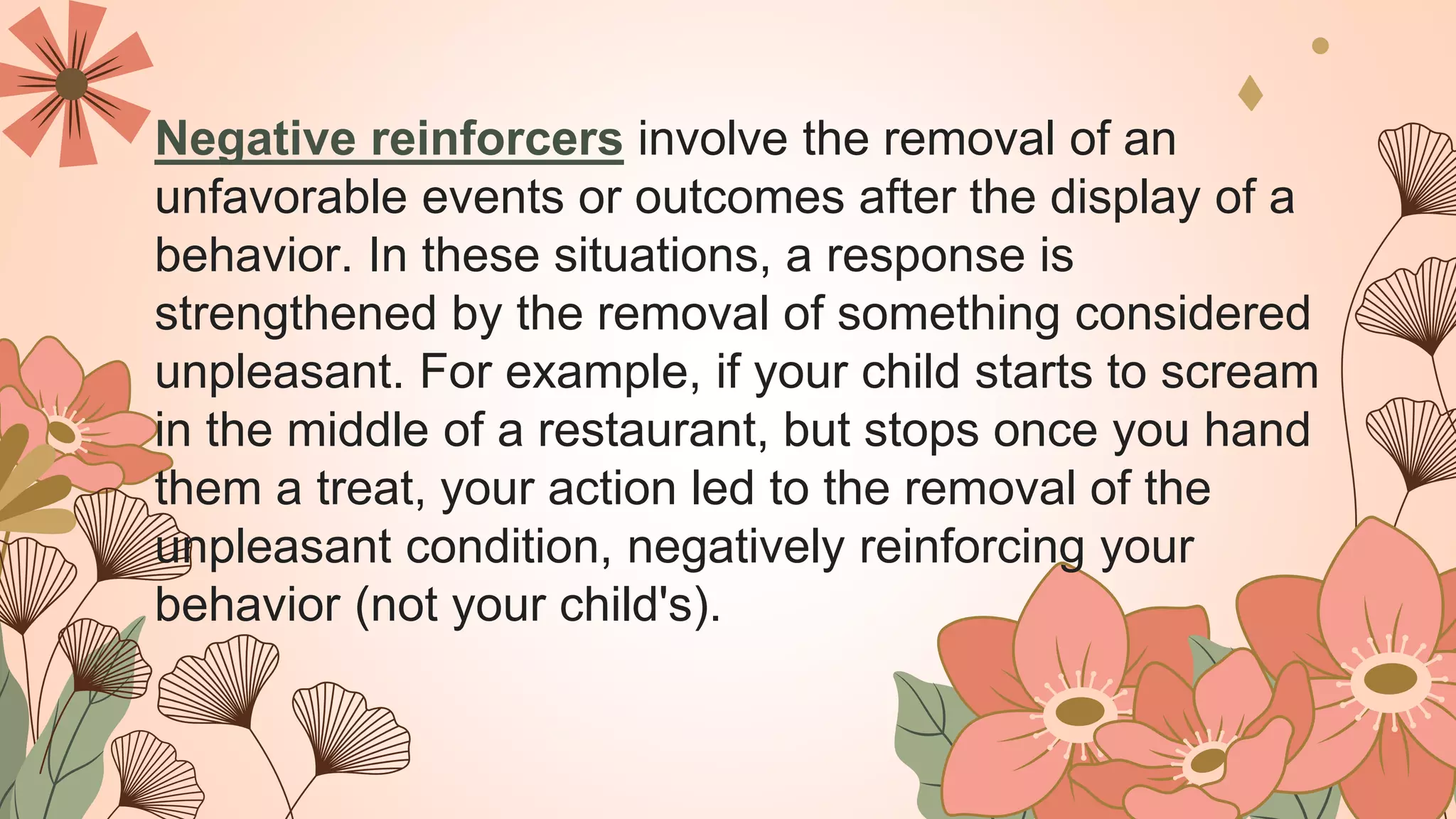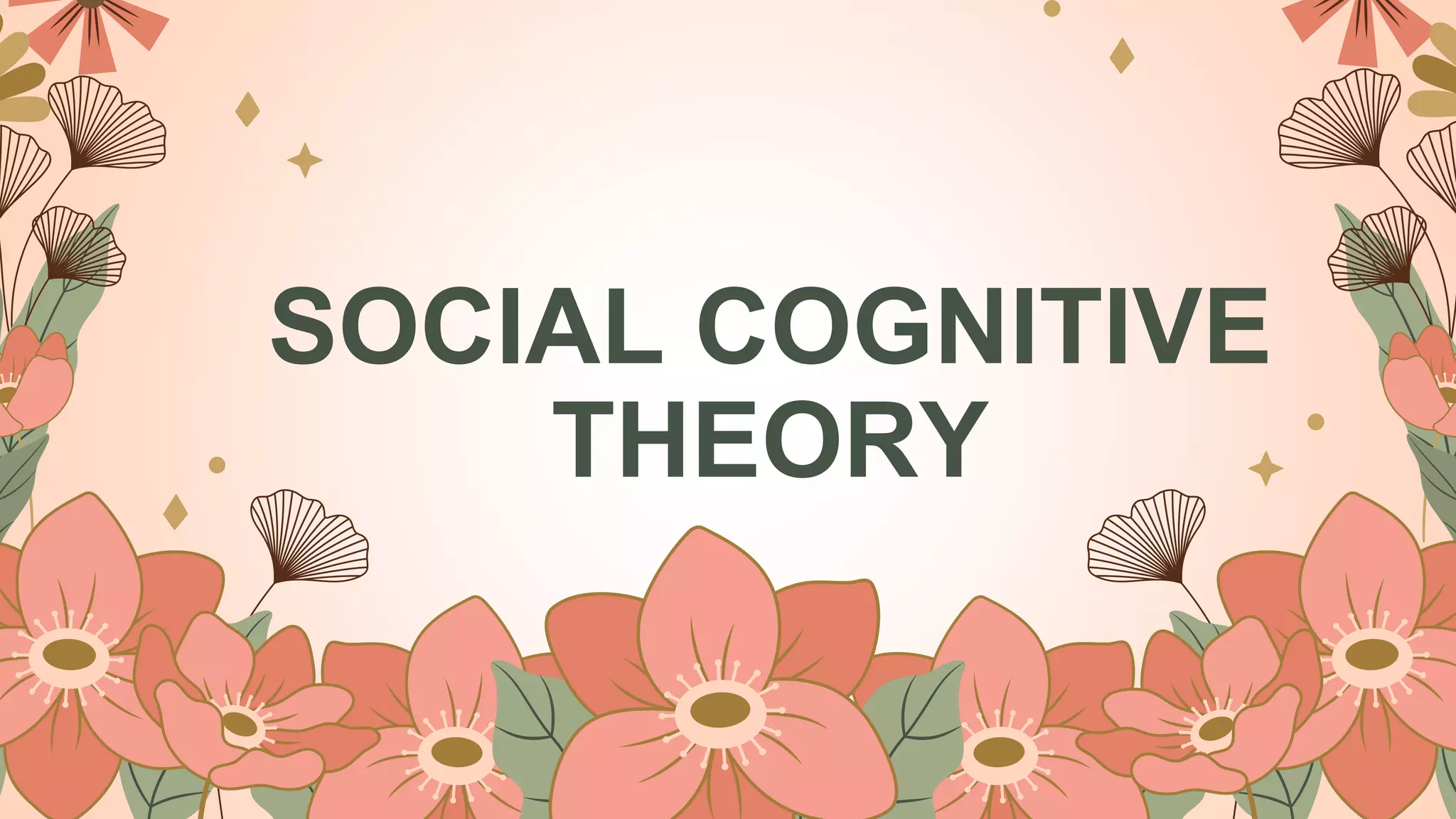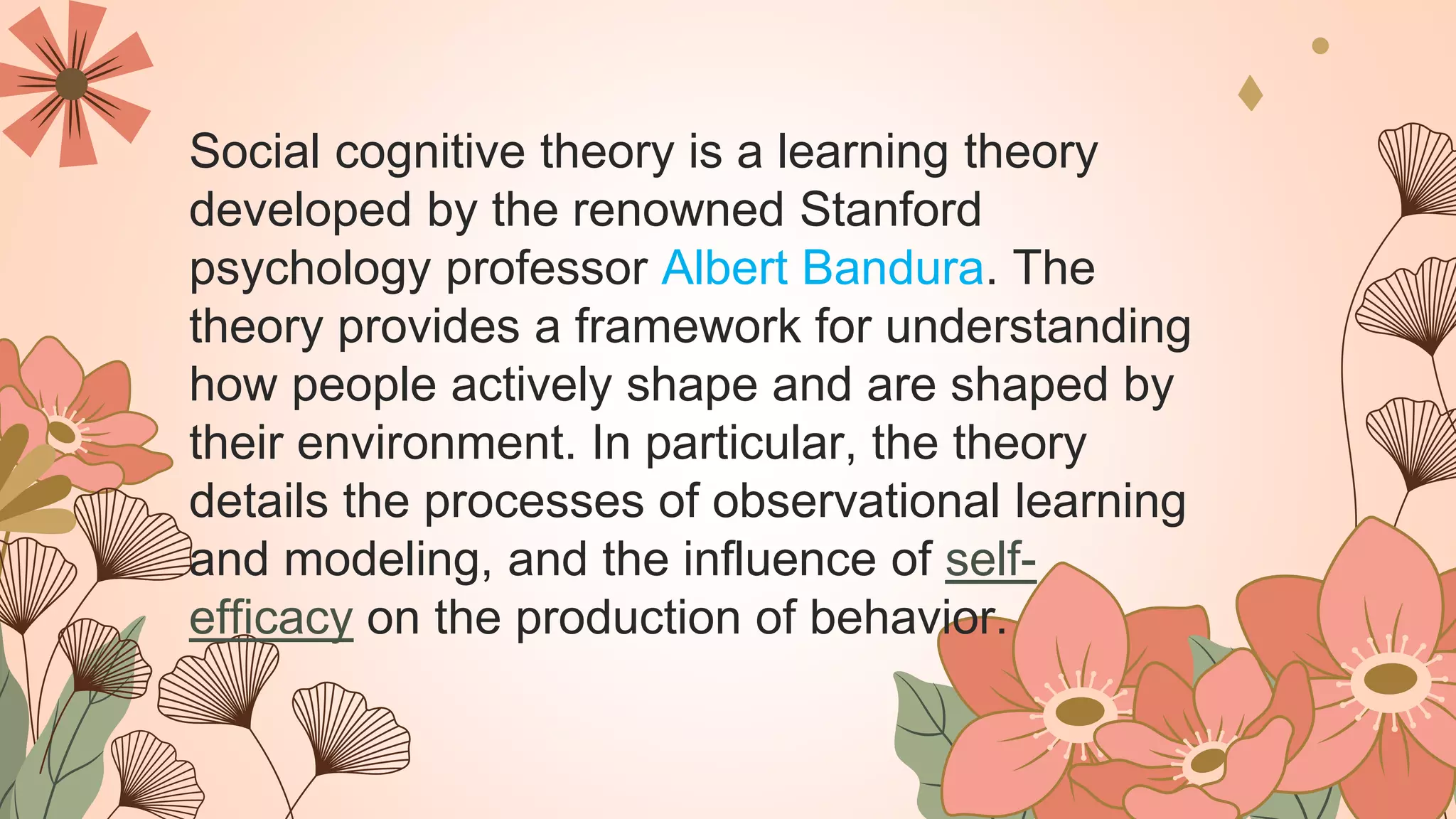Behaviorism focuses on observable behaviors and their environmental causes. It argues that behaviors are learned through classical and operant conditioning, not innate factors. Key theorists include Watson, who established behaviorism, and Skinner, who developed radical behaviorism. Classical conditioning pairs a neutral stimulus with an innate response, while operant conditioning uses reinforcement and punishment to shape behaviors. Social cognitive theory expanded on behaviorism to include cognition and internal mental states. It emphasizes observational learning, where behavior is learned by watching others, and self-efficacy, one's belief in their own abilities. Bandura's Bobo doll experiments demonstrated children learning aggression through observation.
